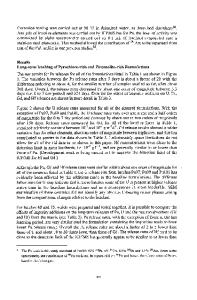What Are the Options for Disposition of Excess Weapons Plutonium?
- PDF / 16,091,617 Bytes
- 12 Pages / 576 x 777.6 pts Page_size
- 59 Downloads / 324 Views
What Are the Options for Disposition of Excess Weapons Plutonium? W. Stall The following article is based on a talk for Symposium X presented by Wolfgang Stoll, Chief Scientific Advisor and Consultant in Siemens, Germany, at the 1996 MRS Fall Meeting.
Introduction Since 1941 when Glenn Seaborg first isolated plutonium in milligram quantities, the total amount converted through neutron capture in U-238 has increased worldwide to about 1,200 tonsJ'2 and continues to grow about 70 tons/year. What was fissioned in situ in operating nuclear power stations is roughly equivalent to 5 billion tons of black coal, while the fission energy contained in those 1,200 tons unloaded in spent fuel is equivalent to another 2 billion tons of coal. About2 260 of these 1,200 tons are ready to release their energy in about 4 kg-portions each in microseconds which is equivalent to 10,000 tons of coal. Most people believe this release of energy poses a major threat of the worldwide arsenal of weapons of mass destruction (WMD). The about 20fold overkill stored in worldwide WMD is considered superfluous after the crumbling of the Soviet Union. Options are sought to dispose of this surplus in a safe, speedy, and controllable manner. While for highly enriched uranium (HEU) (the other nuclear weapons material) dilution into low-enriched uranium and utilization in current light water reactors (LWR) poses market adaptation problems only, and while the worldwide consensus on the elimination of chemical and biological WMD is still in an initial phase, the decision of both the United States (US) and the former Soviet Union (FSU) to remove most of the plutonium out of weapons looks as if it was a firm political decision.3 Present Amounts Table I shows three best estimates based on the average of three inventories
of W-Pu in the different northweststates.2 The FSU figures need presumably a correction of up to 20 tons more, but this has not been confirmed. Only the US and FSU have binding agreements on reducing the amount, going first to about half the amount stored in WMD.3 So 2 x 50 tons W-Pu could be made available until 2002. It would however be too simplistic (Table II) if the Pu stored in spent fuel— largely 900 tons together with the 150 tons, which have been separated in reprocessing plants and have partly been reintroduced into nuclear power stations— would be completely left out of the risk considerations.4 Isotopic Vectors and Chemical Forms For economic purposes, nuclear power stations need relatively efficient burnup figures, which range from the Canadian CANDU of some 10,000 MWd/ton to the current LWR up to 50,000 MWd/ton and fast breeders up to 150,000 MWd/ton. Successive neutron capture transforms the Pu converted originally to Pu-239
from U-238 into higher isotopes, so that in an almost steady state, as is reached in high burnup-LWR, the sequence of higher isotopes falls off by about 1/3 per additional neutron captured; it starts with Pu240 at about 30% contained, when the fuel is unloaded, and ends with Pu-242 at about 5%. Pu-238
Data Loading...











